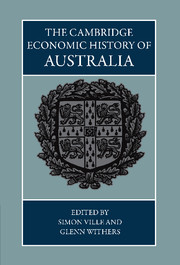
- Cited by 2
-
Cited byCrossref Citations
This Book has been cited by the following publications. This list is generated based on data provided by Crossref.
Domínguez, Lara and Luoma, Colin 2020. Decolonising Conservation Policy: How Colonial Land and Conservation Ideologies Persist and Perpetuate Indigenous Injustices at the Expense of the Environment. Land, Vol. 9, Issue. 3, p. 65.
Álvarez, Jorge Bértola, Luis and Bohlin, Jan 2022. Scandinavia and South America—A Tale of Two Capitalisms. p. 51.
- Publisher:
- Cambridge University Press
- Online publication date:
- September 2014
- Print publication year:
- 2014
- Online ISBN:
- 9781107445222
- Subjects:
- Economics, History, Economic Development and Growth, Economic History


